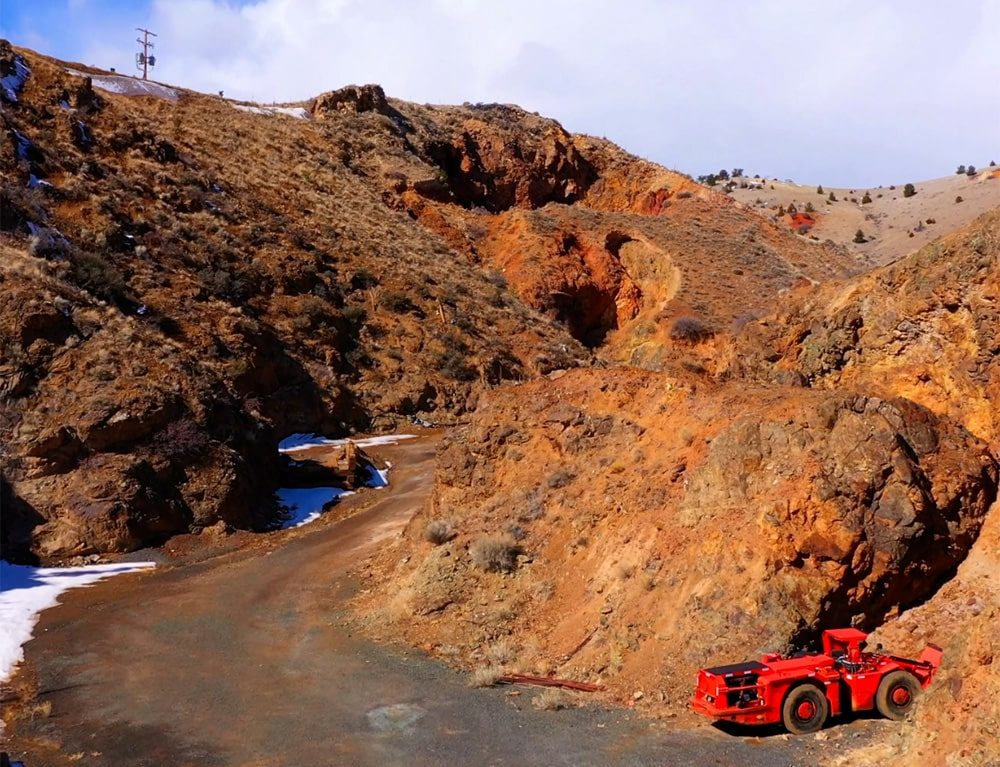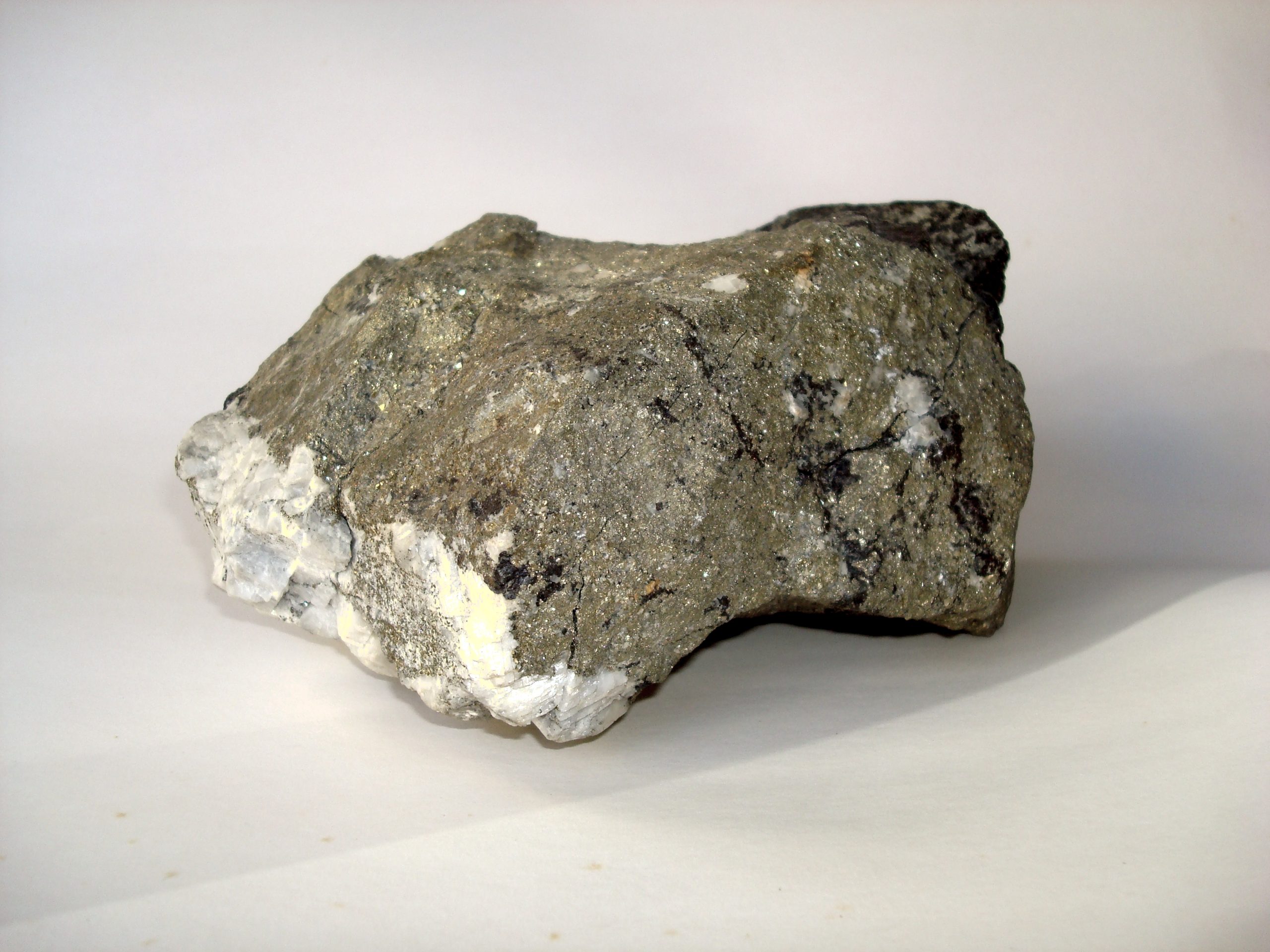Skarns – an important source of metals

Mining a skarn deposit. American Pacific's Madison Mine is a high-grade, past-producing Madison Copper-Gold project in Montana, under option to joint venture with Kennecott Exploration Company, a division of the Rio Tinto Group, which the company acquired in 2020. Source: American Pacific Mining Corp.
By Ellsworth Dickson
Unless they work in the exploration or mining industry, some mining stock investors may not be familiar with the geological term “skarn”. Essentially, skarns are an important type of mineral deposit that can host several different valuable metals.
In a report entitled “Skarns in British Columbia”, by G.E. Ray, P.Geo. and I.C.L Webster, P.Geo., the British Columbia Geological Survey pointed out much of the following facts. There are at least 735 recorded occurrences of skarn (as defined by Burt, 1977) in British Columbia, Canada, and most of these are associated with varying amounts of Fe, Cu, Au, W, Pb, Zn, Mo or, in very rare instances, Sn mineralization. At least 112 skarns have had some recorded metal production and an additional three deposits have produced a variety of industrial mineral commodities such as marble.
The report stated that as of March 1997 British Columbia production data suggests that between 120 million and 142 million tonnes of ore has been mined from skarn deposits with a yield of nearly 35 million tonnes of iron concentrate (magnetite), 850,000 tonnes of copper metal, 7,520 tonnes of tungsten concentrate (scheelite) and 1,760 tonnes of molybdenum concentrate (molybdenite). This represents approximately 90% of the iron, 80% of the tungsten and 12% of the copper produced in British Columbia. Skarns have also produced over 119 tonnes of gold and 364 tonnes of silver, representing nearly 16% and 2%, respectively, of the province’s production of these metals from hardrock mining.
In a 1997 report, Lawrence Meinhart, Department of Geology, Washington State University, wrote, “Most large skarn deposits are associated with relatively shallow magmatic systems emplaced within or near carbonate rocks. These deposits form from the transfer of heat and fluid from a cooling magma to the surrounding rocks. This leads, inescapably, to hydrothermal alteration (skarnification) and more importantly, to zoned systems in both space and time, similar to that documented for other hydrothermal ore deposits such as porphyry copper deposits.”

If you check out the left side of the accompanying photograph, the limestone can be seen in the gold skarn sample from Texada Island in Georgia Strait, coastal British Columbia.
When were BC’s skarns formed? The BC Geological Survey states that skarns in British Columbia were developed during three distinct time periods which coincided with three major episodes of subduction-related plutonism. The most important episode took place during the Early to Middle Jurassic period when over half of the skarns (372 occurrences) were formed, including most of the Fe, Cu, Au and Mo skarns and over 40 % of the Pb-Zn skarns. Later episodes, during the Cretaceous period and Eocene-Oligocene epochs, resulted in the development of 120 and 61 occurrences, respectively; the Cretaceous period was responsible for virtually all the W and Sn skarns, as well as a substantial number of Pb-Zn skarns. The Cretaceous period followed the Jurassic period that ended about 66 million years ago.
This is not to say that only British Columbia hosts skarn deposits. Indeed, most skarns tend to be situated around the Pacific Ring of Fire with skarns stretching from Alaska trending southward to Peru. On the other side of the Pacific Ocean, they run from Korea, Japan, Russia, Thailand, Indonesia down to Australia.
Some of the more famous skarn deposits that became mining operations include Tasu and Nickel Plate, British Columbia; Buckhorn Mountain, Washington State; Fortitude and McCoy, Nevada; Golfo de Oro, Mexico and Ok Tedi, Papua New Guinea.
However, not all skarns are located around the Pacific Ring of Fire. Pegmatite deposits mined for uranium near Bancroft, Ontario have metasomatic phases. Copper skarns were also mined in the Gaspe region of Quebec.
A.H. Lang wrote in his book, “Prospecting in Canada”, that minerals containing iron, copper, zinc, lead, gold, tin, tungsten, molybdenum or manganese [can be] sufficiently abundant in some metasomatic [skarn] deposits to form orebodies. Skarns can be associated with both vein deposits and porphyry deposits.
As far as miners are concerned, there is a caveat; namely, skarns are often not a big, simple “blob” of a deposit but can feature irregular geometry that makes them more complicated to define and mine. The “Skarns in British Columbia” study noted that skarns can be difficult to evaluate for their economic potential. The associated orebodies are commonly hard to locate, partly because they tend to be relatively small compared to the size of the overall exoskarn envelope. However, skarns can have high grade concentrations of metals and small tonnages which make them ideal for small scale mining.
There is a great deal of geological information available concerning skarns and this article is only a brief review. See References.
References: “Skarns in British Columbia” by G.E. Ray, P.Geo. and I.C.L Webster, P.Geo., Bulletin 101, March 1997.
“Application of Skarn Deposit Zonation Models to Mineral Exploration” by Lawrence D. Meinhart, Dept. of Geology, Washington State University, January 1998
“Prospecting in Canada” (textbook) by A.H. Lang, Minister of Supply and Services Canada, 1970
